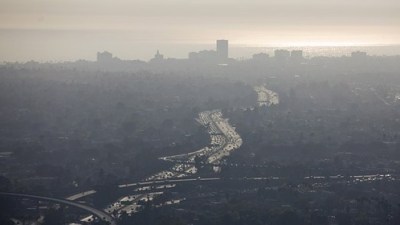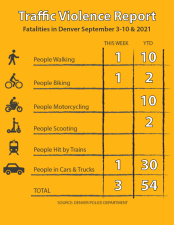Free, ‘Low-Stress Bike Map’ Wants to Boost Biking Despite Denver’s Inadequate Bike Network

On Wednesday, more than 35,000 people in the Denver Metro are expected to venture to work by bike, according to the Denver Regional Council of Governments. But advocates do not expect many of the participants to continue cycling after Bike to Work Day.
To get more people riding regularly, a group of bike advocates created a “low-stress bike map.” The idea, which the city and some bike advocates have mixed feelings about, is to help people find more comfortable routes to ride today, often on quiet side streets, instead of waiting several years for the city to build out a more complete network of protected bike lanes.
“Why is this one day so wildly successful? And the next day, it’s like crickets out there?” asked Avi Stopper, the founder of the all-volunteer Bike Streets project, which is behind the map. “What we’re attempting to do is create a real change in people’s mentality and behavior.”
The map suggests biking on more than 350 miles of trails and low-speed neighborhood streets. Potential cyclists can view the map online, or an easier-to-read printed version is now available for free at nearly 40 locations, including at bike shops, breweries, restaurants and public institutions. Similar to a ski map, the routes are named and people of all ages and abilities should feel comfortable biking on them today.
“I want my kids to be able to ride while they’re still kids,” said Stopper. “I want them to be able to ride with me all over town, and not wait five or 15 years until the elusive comprehensive network will be built.”
Ooooohhhh!!! I found gold in Denver! @avistopper #MBAC #BikeStreets #Bikedenver pic.twitter.com/mXE14HN4R2
— Lisa Truong Nguyen (@LisaCTruong) June 20, 2019
But officials at the Department of Public Works, which oversees the city’s construction of bike lanes, find the map problematic. They say it features routes with too many stop signs, though they support Stopper’s effort to boost bike ridership.
“We applaud Avi’s work to get people cycling,” said Nancy Kuhn, a spokesperson for DPW. “However, we don’t agree with his focus on promoting travel along the local streets only. Some of these streets have stop signs at many of the intersections, making them less desirable from a bicyclist’s perspective.”
The city will start building 17 miles of bike lanes this year as part of its commitment to install 125 miles of bikeways in the next five years. Kuhn says those projects will bring 75 percent of households within a five-minute ride of a high-comfort bike facility.
“DPW is focused on building out a bike network that connects all of Denver within one-quarter mile of a high comfort facility,” she said. “This includes local streets, but also collectors and arterials with separated bike facilities.”
A recent University of Colorado Denver study showed that high-quality bike infrastructure, like what the city will build, reduces road fatalities drastically for all road users, including people who ride bikes, pedestrians and motorists.
Many bike advocates are frustrated with the city’s slow progress toward building a cohesive network of protected bike lanes. But many also see the map as a double-edged sword, fearing that its success could ease pressure on the city to make faster progress.
“I don’t want the city to use it as a crutch to say, ‘Oh there are safe pathways, and we do not need to put in safe infrastructure,’” said Rob Toftness, a bike activist who volunteered to help create the map.
On the other hand, if the map helps to get more people biking, he hopes city officials will install such facilities faster.
“It shows them that more people are going to be coming to the streets,” he said. “We need to quickly make it safer for all of those people who are going to be doing it.”
Tenly Williams, author of the Family Biking Denver blog, often worries about the safety of her husband and children when they bike. She shares Toftness’ concern.
“If the low-stress map helps people feel more comfortable getting on their bike, that’s great,” she said. “At the same time, it’s important not to conflate comfort with safety. That approach doesn’t do anything to help cycling safety.”
Despite the concerns, Stopper remains optimistic that his map can help a wider range of people feel comfortable riding on Denver’s streets, even if they don’t take up biking to work.
“Get some groceries. Get dinner. Pick up a friend. Ride a mile or two and enjoy it,” he said. “Neighborhood bikeways exist already, you can go out and ride today.”
Streetsblog Denver informs the movement for sustainable transportation and a livable city. Give $5 per month.


